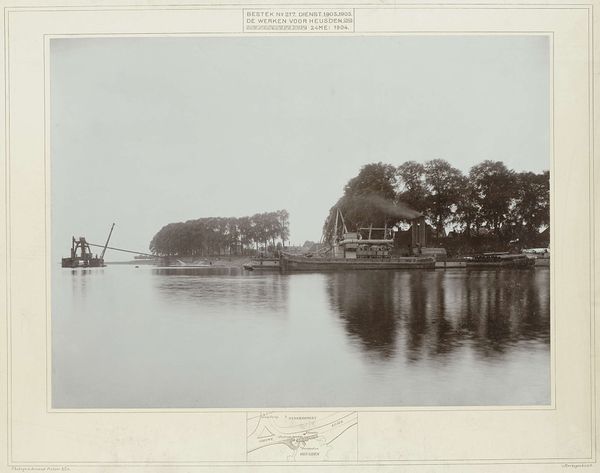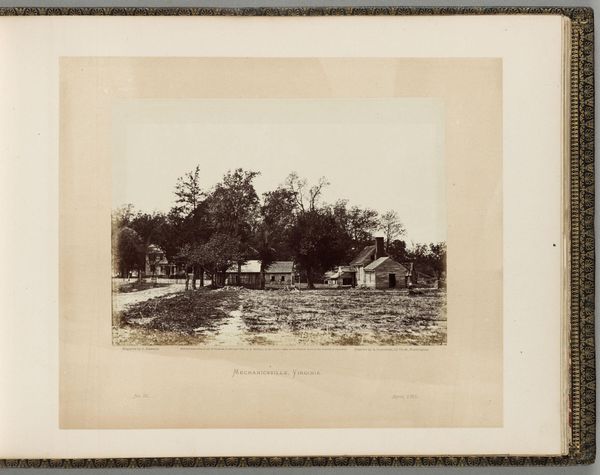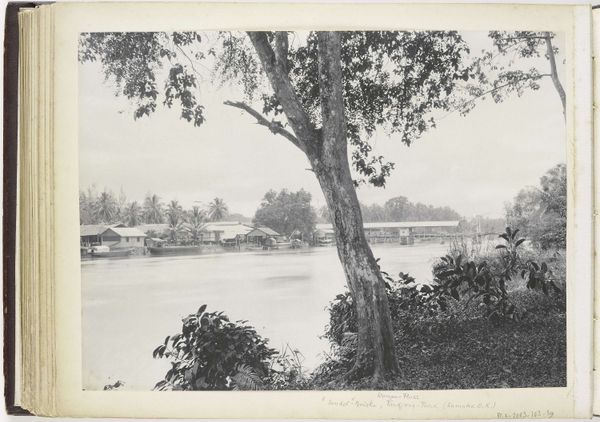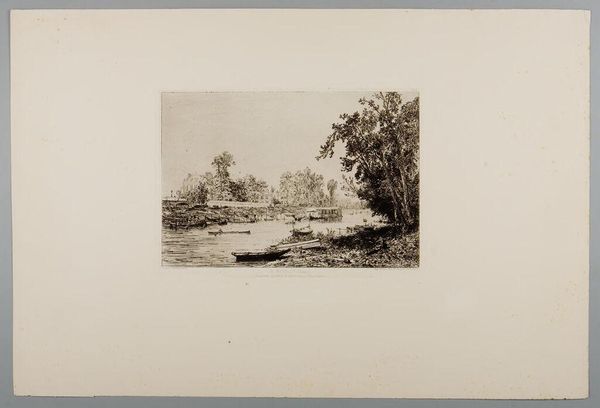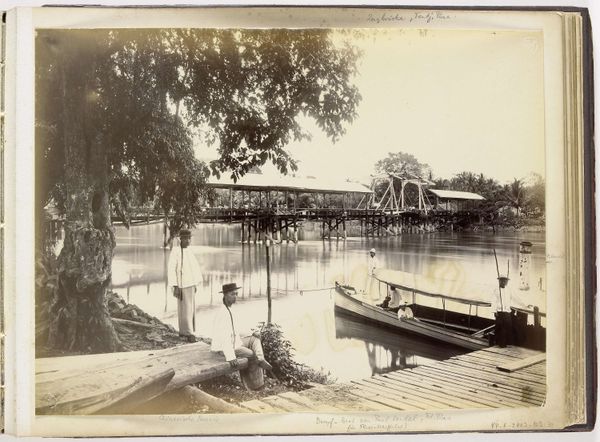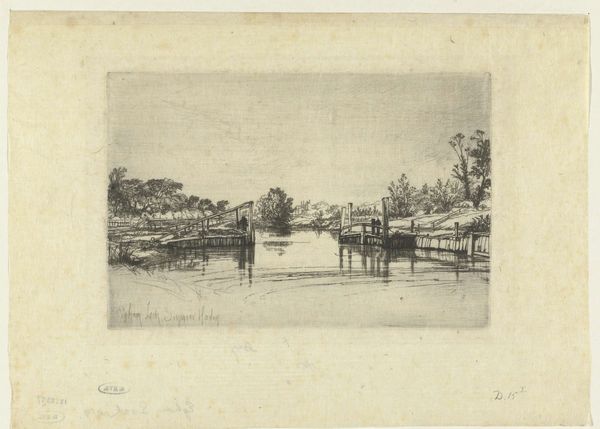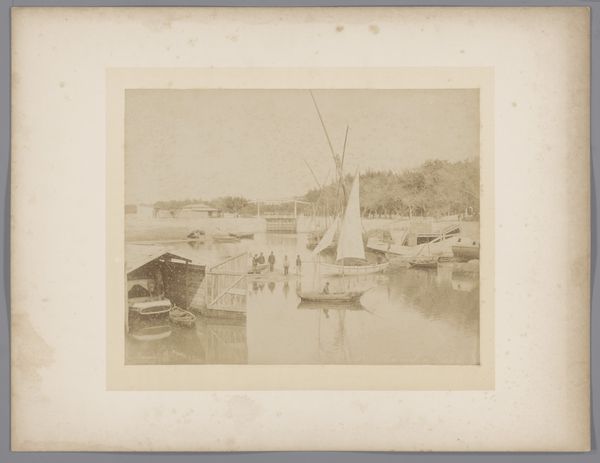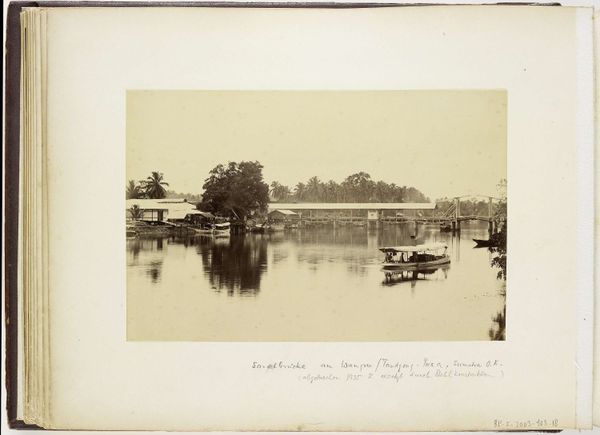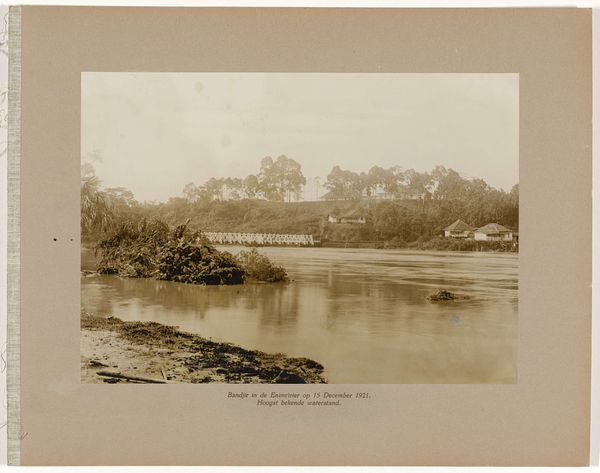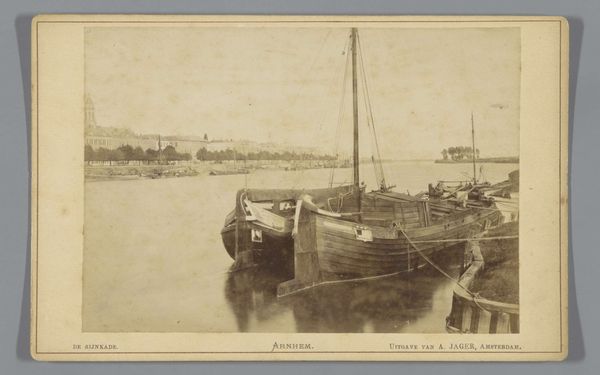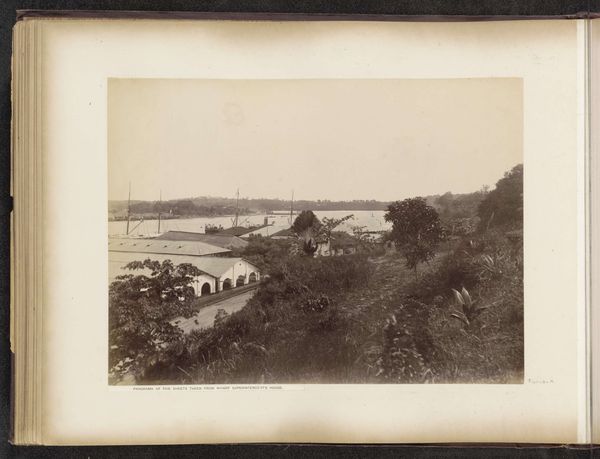
photography, gelatin-silver-print
#
landscape
#
photography
#
gelatin-silver-print
#
cityscape
Dimensions: height 279 mm, width 392 mm
Copyright: Rijks Museum: Open Domain
Curator: "Gezicht op de Moesi bij Kertapati"—or View of the Musi River at Kertapati—dates from around 1921-1922. It's a gelatin silver print held in the Rijksmuseum collection. Editor: The way the light shimmers off the water just... I feel instantly transported to that humid riverbank, even in this black and white scene. It's amazing. Curator: What strikes me is the very clear composition reflecting material culture, no? See how the built environment nestles in close proximity with the organic materials? Piles of what look like freshly milled lumber or logs in the foreground juxtapose with the small dwellings on the river itself, supported by pylons of wood construction? Editor: Yeah, there's almost this tension, isn't there? The industry versus... almost the dreamy stillness of that thin tree, silhouetted against the busier scene behind it? That’s the essence of landscape art. Curator: Exactly, and note how the photographic medium flattens everything. This technique emphasizes the role of photographic art within a colonial context – observing landscape and people within the constraints of early twentieth century materials, processes, and access. Consider the laborers who gathered and cut those materials for lumber production too. Editor: So much history in just one photograph! It really highlights, you know, the constant push and pull between progress and nature. The little boat almost gets lost under the steamship's shadow! It makes me think about sustainability and labor, who benefited from such a place—and at what costs. Curator: Indeed. It's a record of both development and the systems sustaining it, making the invisible labour component briefly visible. These things remind us that landscapes aren't simply scenic, are they? Editor: No, never just scenic. Thanks for bringing that perspective! Now I'm seeing all the details that pull that labor to the fore. Curator: And your insight pulls me back to considering photography’s capability to generate affect. How material and context unite to resonate today.
Comments
No comments
Be the first to comment and join the conversation on the ultimate creative platform.
